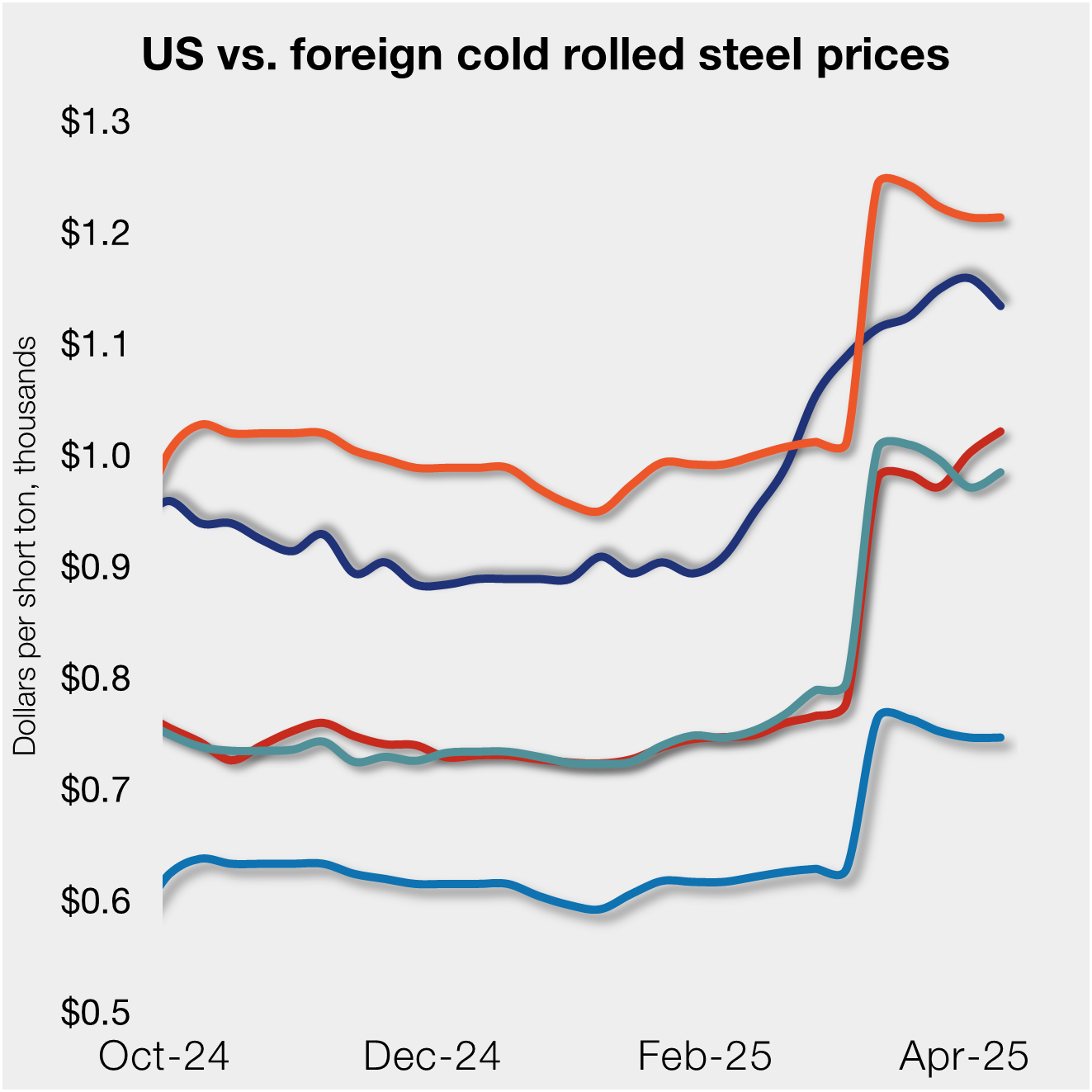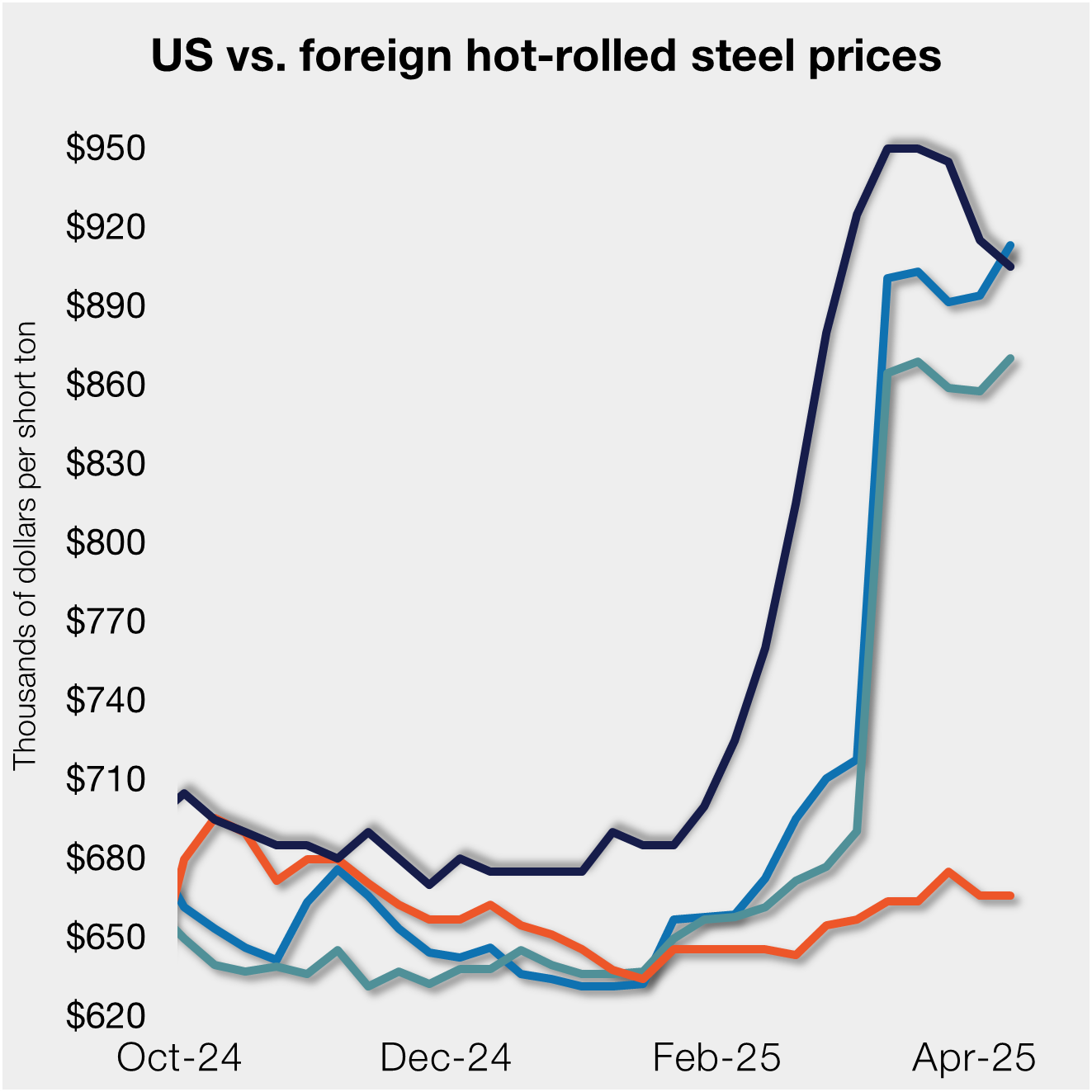Steel Products

Service Center Execs Express Optimism in Unpredictable Times
Written by Becca Moczygemba
August 25, 2022
The pulse on this year’s service center health check at SMU’s 2022 Steel Summit was strong. Despite challenging and unpredictable times, service center CEOs remain positive.
![]() “It’s challenging, but we’re optimistic. This industry is old and immortal,” said Edward Lehner, president and CEO of Ryerson, speaking on a Summit panel.
“It’s challenging, but we’re optimistic. This industry is old and immortal,” said Edward Lehner, president and CEO of Ryerson, speaking on a Summit panel.
Through a wave of unexpected events, including Covid and Russia’s invasion of Ukraine, service centers have weathered the storm by pivoting and implementing malleable strategies. As many individuals stayed home to work, steel sales and manufacturing managed to continue. As Pam Heglund, president and chairwoman for Mill Steel expressed: “You have to be flexible and willing to change and be optimistic. As long as we’re selling steel, we’re doing well.”
But how do service centers compete in an ever-changing landscape? With the prevalence of remote work being stronger than ever, there’s no question that employers have to be more flexible and take a different approach with their strategies. “Ensure employees are safe and happy, have a good team behind you for the day-to-day. Be flexible. We put our heads down and survived. We had to do things differently. It was hard but we came out great. It’s about being able to change, be flexible, we cannot predict the future,” stated Heglund.
Flexibility includes being innovative, and the path to innovation is a marathon, not a sprint. “It’s a long journey,” noted John Ganem, CEO of Kloeckner Metals. “You have to be bold enough to try and make the investments. Not all of it is successful. The key to transformation is to not be afraid to make changes and adjust strategy. Our journey started with customer experience. There’s a large opportunity to take tech and leverage it and make the employee experience better. It’s a high impact to business overall,” he continued.
The panelists placed a significant emphasis on cultivating an organizational culture that grows from the inside out. “Everyone has a definition of culture. For us it’s how we treat people and what we’re able to provide our people and their families. Family comes first. It’s about supporting them, making sure they don’t go home with stress and anxiety. We have to do our part to ensure work is a place for people to come where they don’t feel stressed, believe in who we are and how we treat our people,” stated Heglund. “Culture was telling people what it was from the top down, now we redefined who we wanted to be and created our culture together,” said Ganem.
Culture is an all-encompassing part of any institution and includes every employee, not just those in an office. While there has yet to be an injection of younger generations in the industry, the efforts to do so are not unspoken of. “Tech is not going anywhere without industrial metals. We should be promoting manufacturing with pride,” remarked Lehner. But how can the industry effectively entice a younger audience? Heglund indicated that it begins with going into schools and talking about manufacturing, inviting younger people to see the plants and get familiar with the companies. Allowing younger individuals to see what they would be experiencing before they actually sign on might not be a terrible strategy. Afterall, we spend the majority of our lives working, and as Ganem stated, “These aren’t jobs, these are careers.”
Have some news or just want to chat? Email me!
By Becca Moczygemba, Becca@SteelMarketUpdate.com

Becca Moczygemba
Read more from Becca MoczygembaLatest in Steel Products

SMU flat-rolled market survey results now available
SMU’s latest steel buyers market survey results are now available on our website to all premium members. After logging in at steelmarketupdate.com, visit the pricing and analysis tab and look under the “survey results” section for “latest survey results.” Past survey results are also available under that selection. If you need help accessing the survey results, or if […]

CRU tariff webinar replay now available
CRU’s latest webinar replay on how Trump’s tariffs affect the global steel market is now available on our website to all members. After logging in at steelmarketupdate.com, visit the community tab and look under the “previous webinars” section of the dropdown menu. You’ll find not only this special CRU webinar but also all past Community […]

US, offshore CRC prices diverge
US cold-rolled (CR) coil prices declined this week, slipping for the first time since early February. Most offshore markets deviated, moving higher this week.

Construction growth slowed in March on tariff woes: Dodge
The decline comes after reaching a record high in January to kickstart the year.

Return of S232 zapped gap between US and EU HR prices, Asian HR remains cheaper
Domestic hot-rolled (HR) coil prices declined this week for a third straight week. Most offshore markets bucked the trend and gained ground. Uncertainty in the US market around tariffs, especially after “Liberation Day,” caused US prices to slip as buyers moved to the sidelines. It’s unclear to date whether the 90-day pause on the more […]
